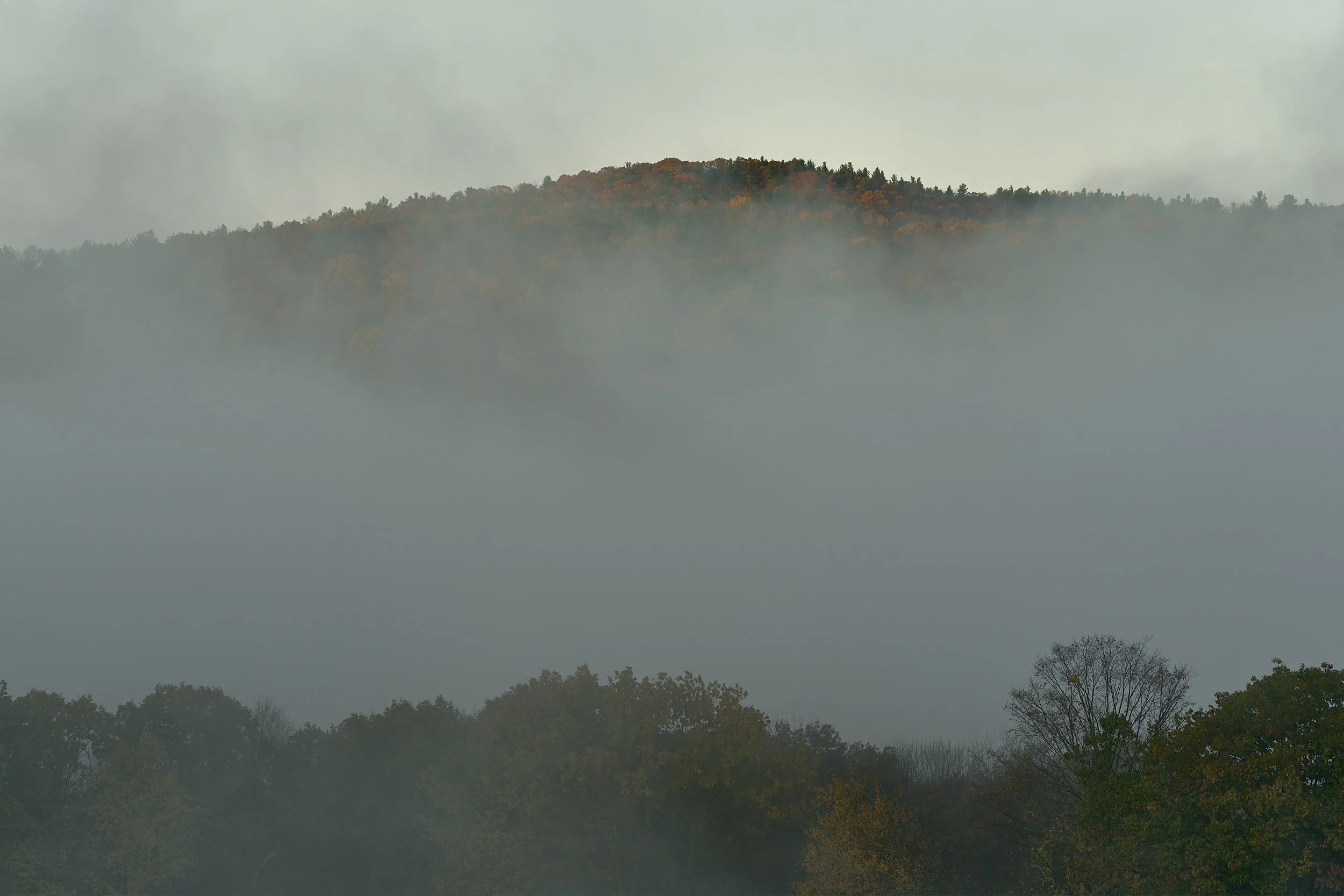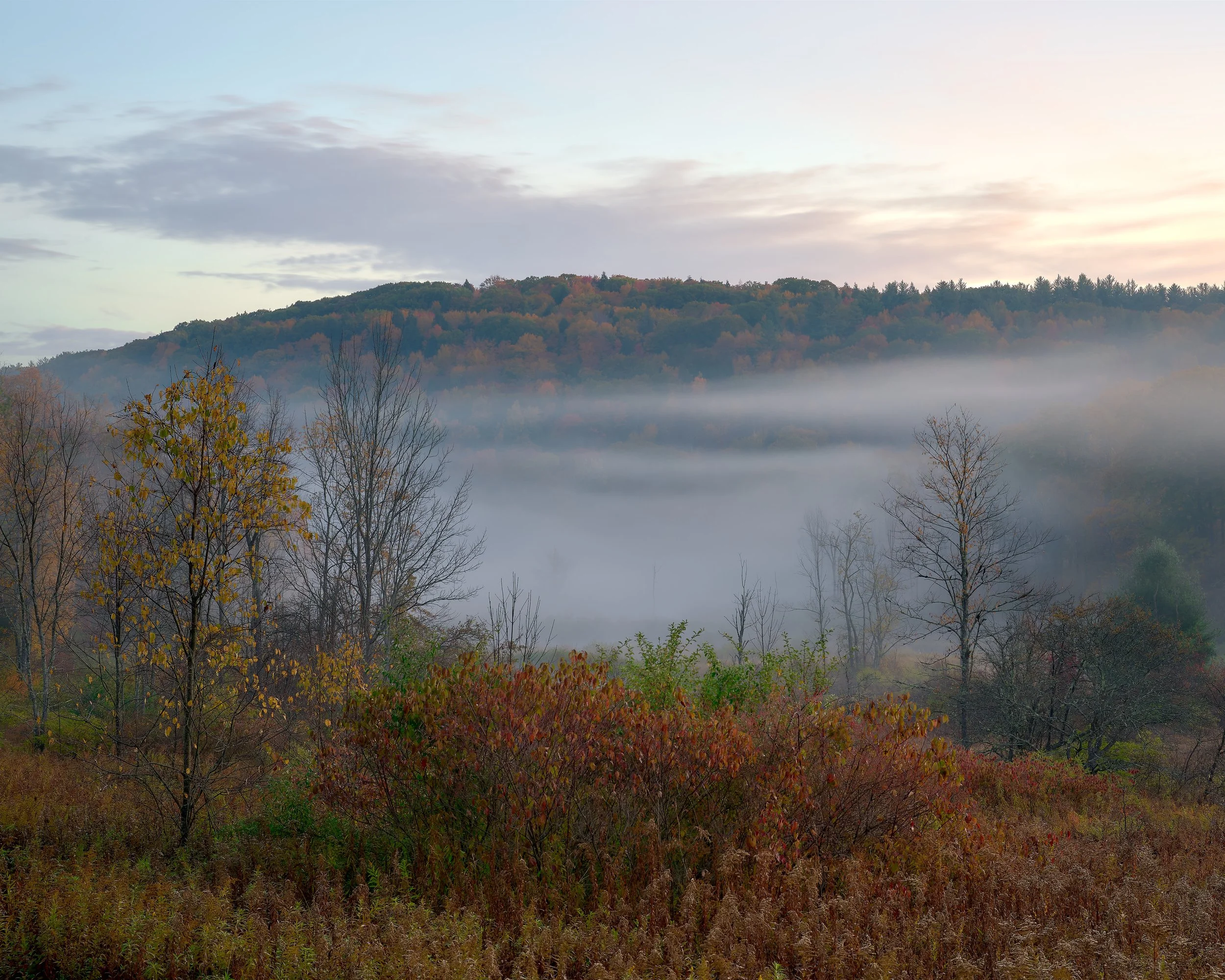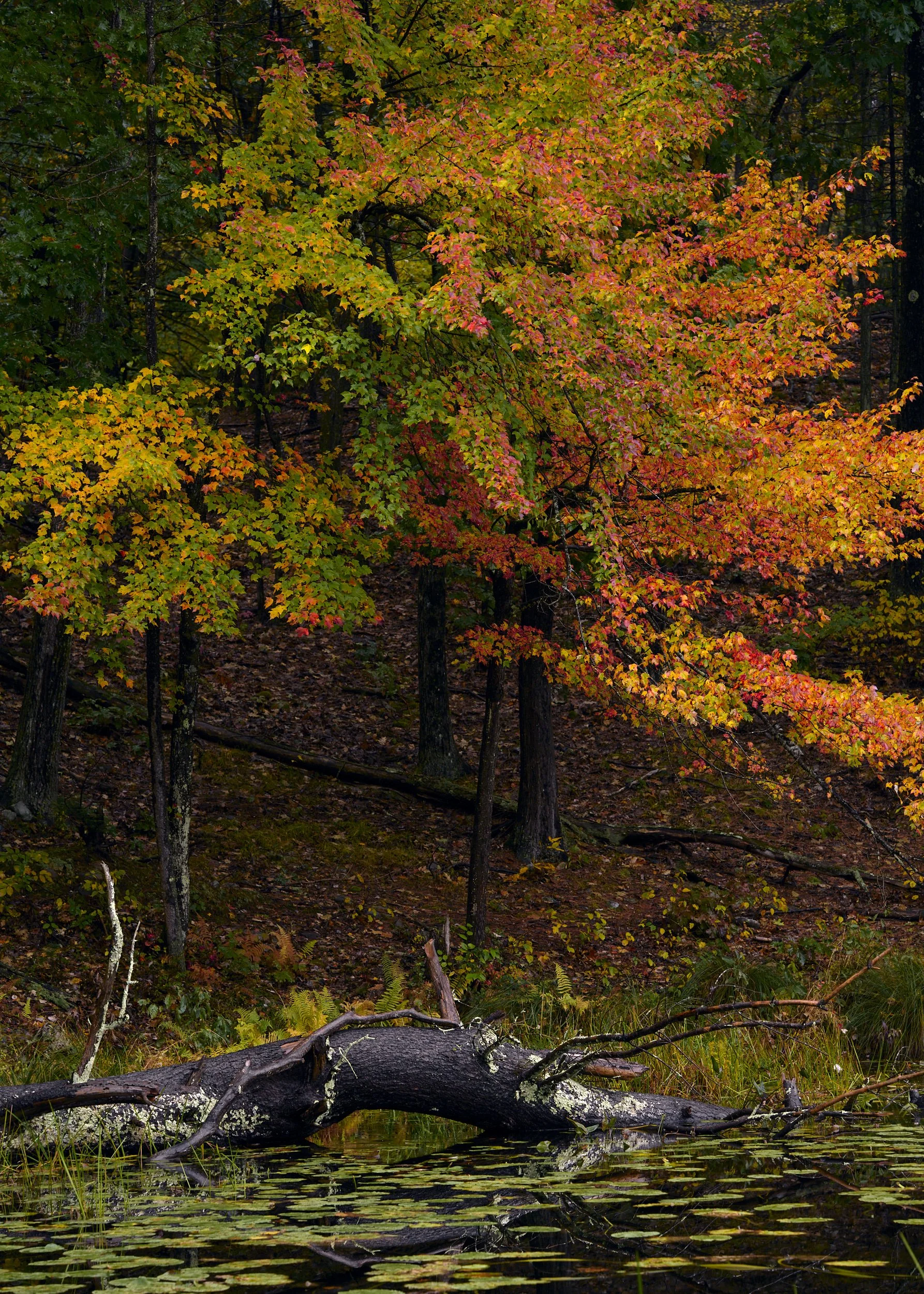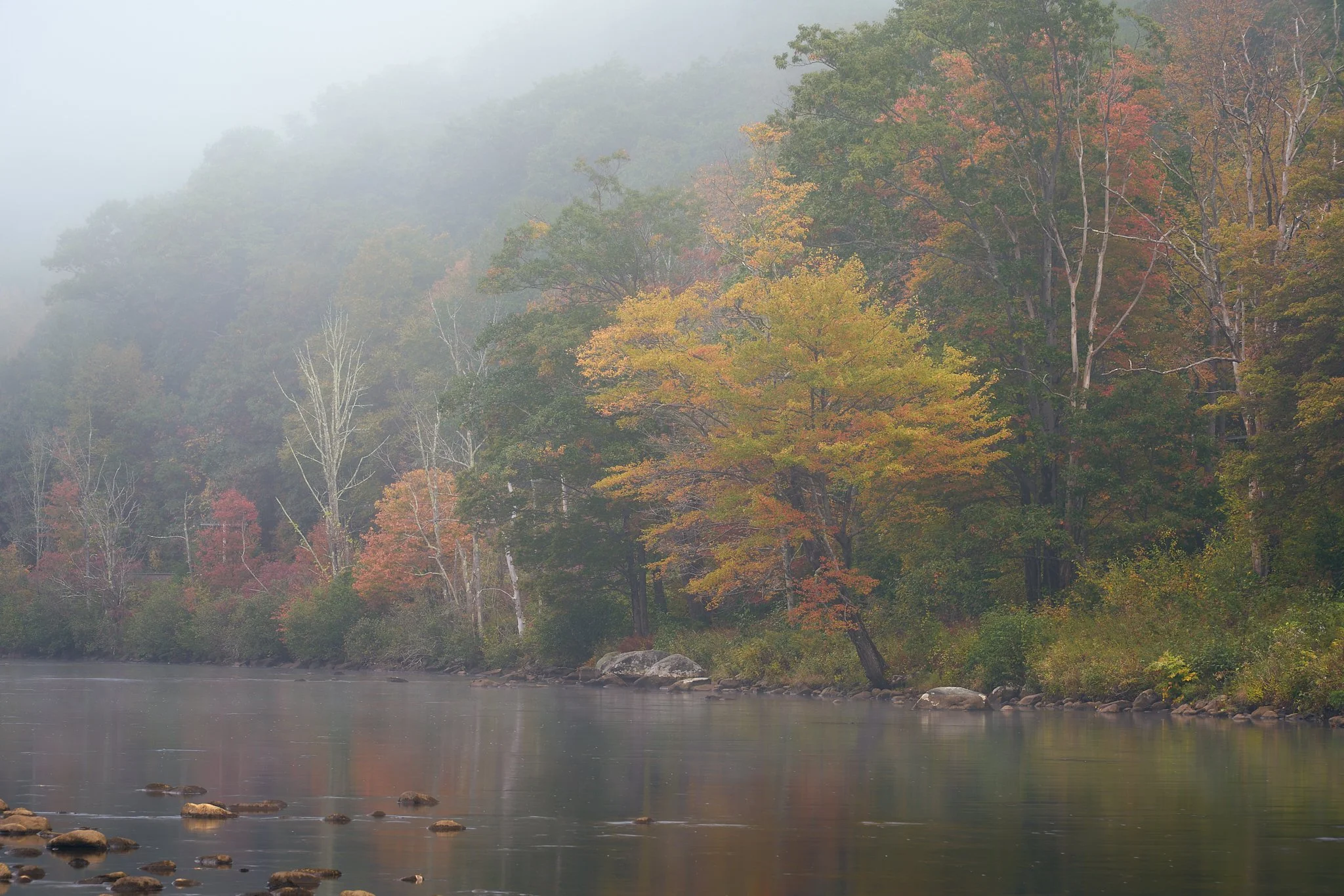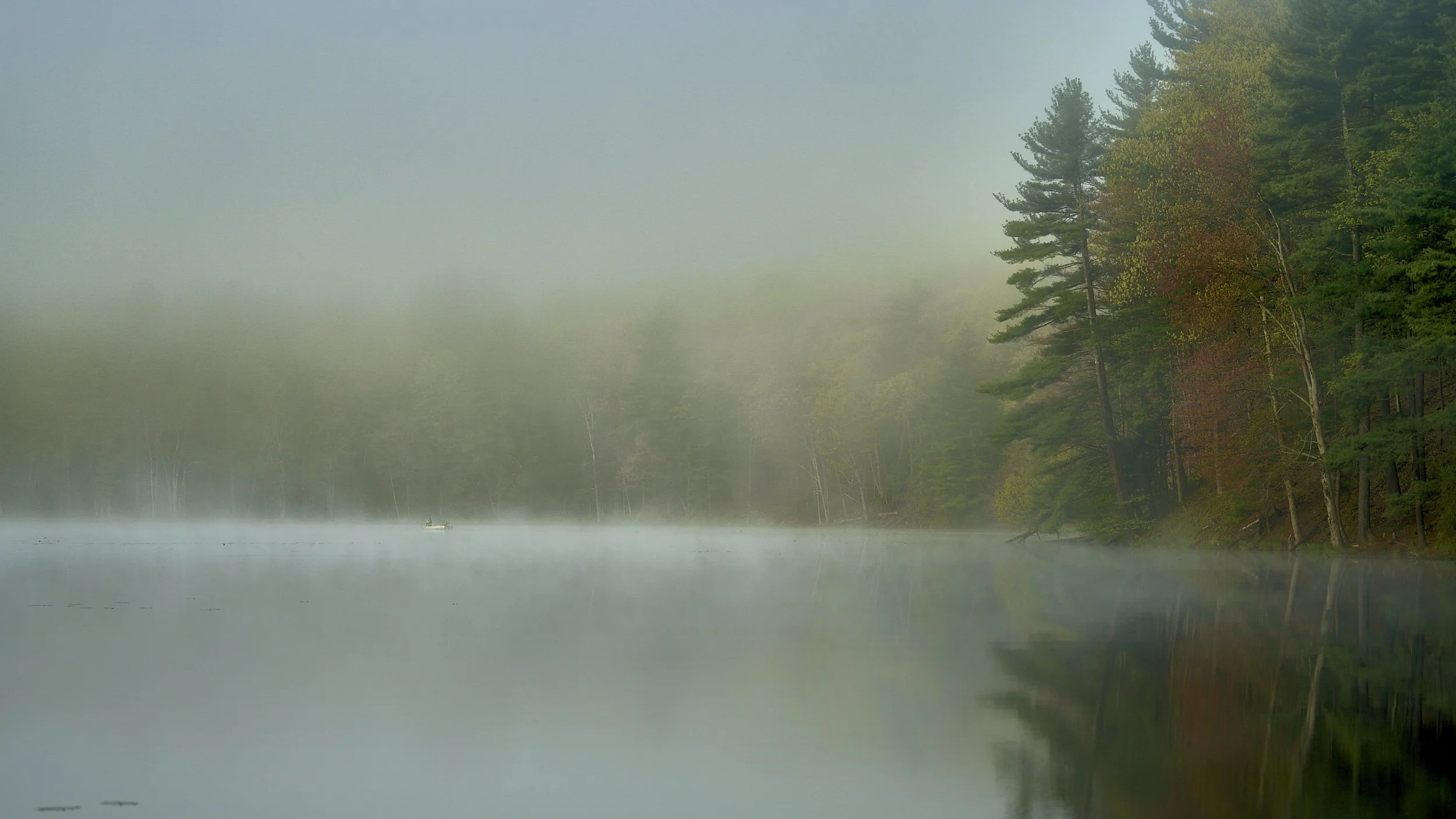The Fog is Rising
"I must go in; the fog is rising." Words antithetical to most landscape photographers—we crave the moody, moist air inveigling compositional coherence otherwise unseen. These were purportedly Emiliy Dickinson’s last words. Dickinson, “[i]n her last days . . . was only able to write short notes, and her `briefest last message,’ according to her niece, Martha, contained the ominous and poetic last words: `I must go in; the fog is rising.’” Emily Dickinson is likely America’s greatest poet and certainly is the Pioneer Valley’s, having lived virtually all her life less than ten miles from where I sit. Largely unknown in her lifetime, she sits among the giants of western literature, her carefully hand-crafted notebooks—Fascicles—and a host of other manuscripts contain 2,500 poem manuscripts, including several classics of the English language. Emily Dickinson’s Poems: As She Preserved Them, edited by Dickinson scholar Cristanne Miller has become a minor, slow-burn obsession of mine, as I linger over her abstruse yet translucent compact verse, layered in meaning and paradox. This interaction has led me to reassess many things about my creative output and engagement. One outcome is my reimagined gallery highlighting images in which “fog is rising” as one that tries to encapsulate, in its thoughtful sequencing and loftily so, the essence of what poetry can bring. That is, to capture in those images what Dickinson declared about poetry when, in an August 16, 1870, letter she wrote “If I read a book [and] it makes my whole body so cold no fire can ever warm me, I know that is poetry. If I feel physically as if the top of my head were taken off, I know that is poetry.” As I said, loftily so….but it was chance encounter over YouTube, in the shadow of my new obsession with Dickinson, that lead me back to an area of writing long left untended.
***
From my teen years to my early 30s I considered myself a poet above all else in terms of creative engagement. I still have a small duffel bags of my own, much less well tended “fascicles”—various hardbound composition books amounting to a hodgepodge of short verses I called poetry and off the wall journal entries of a young man I only scarcely recognize as I cinch up my necktie in the mirror. I recall hearing along the way that one could only truly call themselves a poet if they were still doing it after the age of forty, an accusation that what I was doing back then wasn’t really poetry. That may well be, but that does not encapsulate the dedication I had to maintaining a lifestyle that would leave room for exploring the notion that maybe, if I was lucky enough to reach the golden years, I might be an actual poet. And though I have taken a shot at writing a poem here and there over the years, by the definition here, I would not think of myself as a poet over the last fifteen plus years. That is until I picked up a camera and found my way back to expressive writing including recent efforts at verse that, though it falls well short any bar set in Dickinson’s Fascicles, I am hopeful is poetry. And when I stumbled upon Magnum photographer and publisher Alec Soth video series called Pictures & Words, I took this confluence of events as an opportunity to explore new modes of expression combining images and short verse poems in what I am calling “Couplets.”
Soth is known for his contemplative and poetic depictions of life in the American Midwest and South. It has been said that his work often explores themes of loneliness, longing, and the search for connection in everyday settings. His seminal work Sleeping by the Mississippi, called “one of the defining publications in the photobook era” is, according to The New Yorker, “anchored . . . in history, myth, and metaphor.” He has gone on to publish several wonderful photography books, earning him worldwide acclaim. As brilliant and intriguing as his published works are, it was when his YouTube channel that he started during the pandemic to fill time popped into my feed that Soth took me in a new direction, leading me back to verse and, possibly the “legitimacy” of being able to possibly call myself a poet after all.
With an admittedly ASMR-laden delivery, in his series of 4 videos, Soth, with his top-down rigged camera, takes us through some of his vast collection of photography books, in particular those that have attempted to couple pictures and words. His collection is eclectic to say the least and includes seminal works, lost gems and even children’s books, one of which features in this series. Along with the guided tours he gives of each book that makes this lofty attempt of combining pictures and words, Soth espouses on the difficulty one can face in successfully combining pictures and words. He is not wrong at all and I have, myself, struggled with even my sparse attempts at giving titles to some of my images, often coming away as if I had as best merely directed the viewer to see what I think they should, rather than trusting at all in bare engagement. In the end, I come away with a more than a wealth of information and wisdom from a master of his craft as a maker of photographic books and a true lover and seeming historian of the photographic book. I came away with the challenge of trying to combine in a much more immediate and intimate manner than my essays my image making and my writing. The result, the success of which far from certain, can be seen in the following first set of my “Couplets.”

